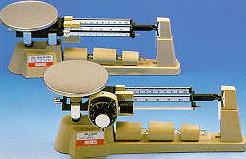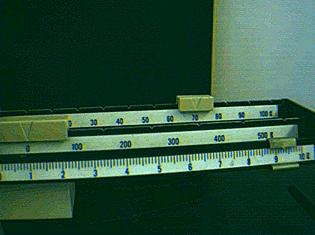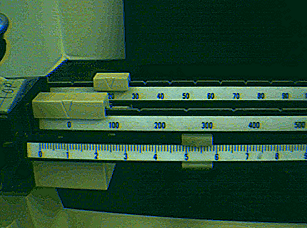| Mass
is the amount of matter an object has. We often use a triple-balance beam to measure
mass.
A triple-beam
balance gets its name because it has three beams that allow you to move known
masses along the beam. 
Here
is a picture of a triple beam balance. You probably have used one in school.
There are also
many other types of balances. Scientists need balances that can measure very small
amounts of mass. If
you are interested at looking at the many other types of balances click here. If
you are using a triple beam balance in school you might want to brush up on your
skills on how to use a triple-beam
balance Because
a triple beam balance compares a known mass to an unknown mass it is unaffected
by gravity. Unlike a spring scale which really measures weight, the triple beam
balance gives a true measure of mass. Do
you often get confused between mass and weight? Check out the Mass vs. Weight Page
Now
it's time to practice your skills using the triple-beam balance.
Problem
1: 
A block is put onto a triple
beam balance. What
is the mass of the object (to the closest tenth of a gram? Click
on the picture below and get a closer look at reading the scale after the scale
has been balanced. Remember to find the mass using a triple beam balance you must
add the mass values of each of the three beams. Type
your answer in the space provided below, then hit the submit button.

The mass
of the object is: Please
enter your answer for Block I in the space provided: If you
need a calculator one is available. Click on calculator button on the right side.
Problem
2: A
block having the same dimensions is now put on the scale. What is the mass of
this object? 
Please enter your
answer for Block II in the space provided: Problem
3: If
both objects were put on the scale at the same time their total mass would be
:
Please
continue to the next chapter on volume.

| 
